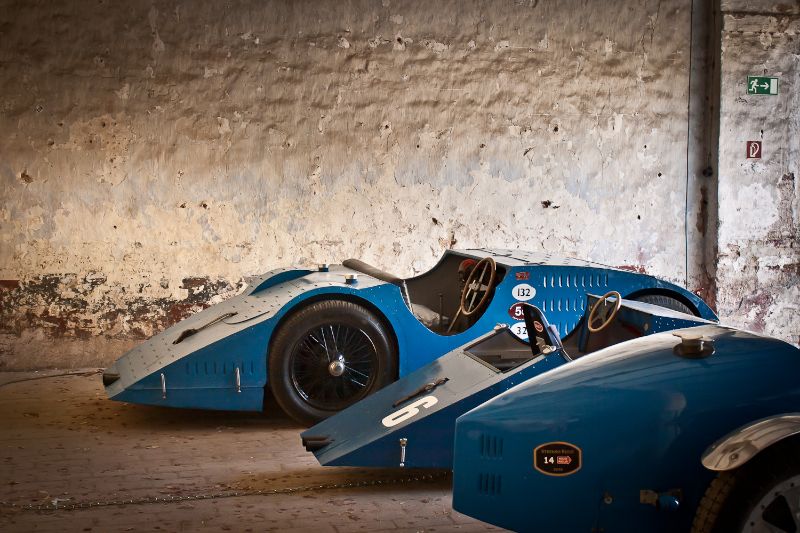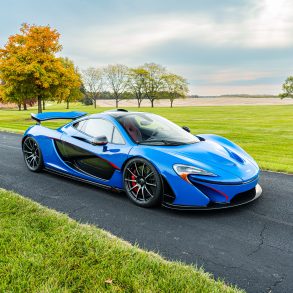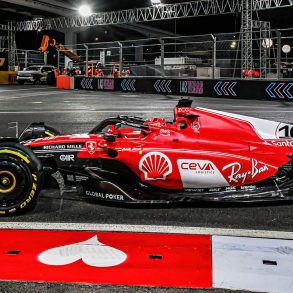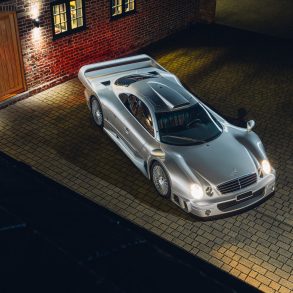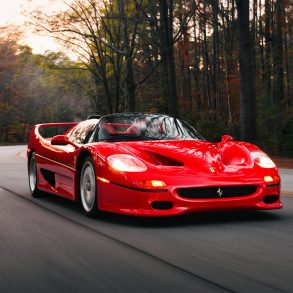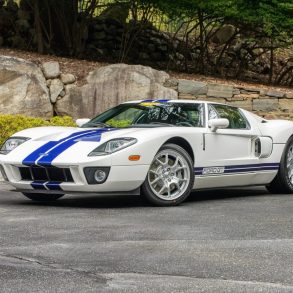Ugly Grand Prix Cars
by Robert W. Butsch
The debut of the Lotus 49 awakened in me the realization that racing cars could be beautiful in an aesthetic way, quite apart from their qualities as machines. There are real elements of an art form in many cars, although art was not their builders’ goal. Prior to the 49 I understood that cars could have pleasant appearances. But Chapman’s original, pure 1967 creation with the absolutely perfect proportion of tire, engine and body; the exquisite clash at 3/4 body length of the graceful, minimalist cockpit-nose with the gleaming, faceted complexity of the Cosworth and rear suspension; the rakish termination of the dainty exhaust pipes; the simultaneous visual suggestions of great fragility and indomitable authority; transcended the mechanical world and passed into the universe of classic beauty. Alas, it is often characteristic of the beautiful that it is ephemeral. The ’67 Lotus 49 lived less than a year.
As there is no figure without ground, no yin without yang, so it is that beauty cannot exist in the absence of ugliness. This article therefore pays tribute to ugly Grand Prix cars. If beauty is in the eye of the beholder, true ugliness is probably more universally agreed upon. I therefore expect not to step on many toes with my selections, but if I do offend your sensibilities, feel free to rebut my opinions.
A scale of ugliness might be useful. I suggest a range of 1 to 10, with a 1 being awarded any car whose appearance would impress a minor wrinkle of distress upon the brow, and a 10 being awarded any car one would not expose to small children or persons with heart problems.
The introduction of advanced aerodynamics to racing requires us to consider two separate eras of ugliness: “before wings” and “since wings”. The latter will certainly gather the lion’s share of the prizes.
With this in mind we might as well give the initial award to …… the Lotus 49. This would be the 1968 version with the spoiler engine cover and the big, screen-door-awning wings set on long poles above the nose and tail. Yes, the ones that tended to collapse at inconvenient moments putting Hill and Rindt into the Armco. Actually, almost all of the cars that season sported these monstrosities, so let us award 6’s to the whole sorry collection.
Low wings are sufficiently homely as to earn virtually every car since 1969 at least a 3. A few teams, such as Brabham and McLaren, would at certain times and circuits during the late ’70s and early ’80s divest their cars of front wings in the interest of proper setup. These get a 2. And the early Lotus 72 wedge possessed so many virtues of form to offset the vices of its wings that it will be the only “since wings” car to get no award at all.
There was a period during the late ’70s when particular marquee, notably March, BRM and Brabham, eschewed discrete front wings in favor of one giant piece of body-work that fanned out to envelop the leading surfaces of the front tires. No way was this the path to reducing the unsightliness of front wings. These machines were sufficiently reminiscent of (at least the nose) of the car that will presently be awarded top prize that we will give them 6’s.
Maybe it’s because the ’70’s just seemed to be a time of disaster for good taste, but that decade produced additional F1 offensiveness. The tire regs. brought forth big, fat balloons for rears and small, black things for fronts. Tyrrell is to be commended for conceding the obvious and mounting four itsy-bitsy fronts, thereby revealing the ridiculousness of the trend. For rendering this service the six-wheel Tyrrell, which otherwise would rank highly, gets only the standard 3 noted above. Having praised Tyrrell, this is probably a good point at which to chide them for first bringing into F1 the now ubiquitous high noses and low-slung front wings, and the (fortunately) not ubiquitous recent “rear view mirror” winglets. Actually, the Tyrrell winglets suggest a special awards category: tiny ugly aerodynamic devices. Other competitors could include the mini wing on the “cruise ship” McLaren, and the micro nose wings, also on the contemporary Tyrrell.
Add 2 to all the ’70s cars with great big air boxes perched on top of naked engines (e.g., certain of the Marches).
It is probably good to reiterate that the judgements made here say nothing about the performance of the machines being considered. An eyesore that wins is undoubtedly a thing of beauty to its driver and team. Scheckter and Ferrari may very well have felt this way in 1979 regarding the 312 T4. Picture a cereal box laid flat with a tire at each corner. The usual rear airfoil is present and a cockpit is cut out of the middle of the box.
Cantilevered off the nose is a cone supporting at its pointy end a shovel-like structure serving as the front wing. If a predecessor to this car was nicknamed the “snowplow”, then this must have been the “super snowplow”. Ferrari themselves applied the term “ugly” to it. It would sometimes appear in public missing the body work covering the roll bar and driver’s air supply bottle. One of the worst slanders that can be made against an F1 car is that its appearance would be improved by adding one of those outsized ’70s airboxes, but this I fear is true of the 312 T4. However, it won for Ferrari and the South African the manufacturer’s and driver’s World Championships, and for Villeneuve second in the points. Not withstanding this, it gets a 7.
It should be evident by now that we must generally look to the “before wings” era to find cars which earn none of the sort of recognition being dispensed here. Nevertheless, the mid ’60s and earlier years can claim a share of ugly Grand Prix cars. To begin with, none of the first rear-engined Formula 1 cars looked good with skinny tires. Give them all a 5, including Brabham’s championship Cooper and Moss’ Rob Walker Lotus (the latter added insult to artistic injury by sometimes turning out minus portions of the side of the cockpit, presumably in deference to comfortable ventilation for Moss). The first rear-engined cars must have represented a real shock to discriminating connoisseurs of Formula 1 machinery. While the American Indianapolis racers never did figure out how to make a good looking front-engined car, Mercedes, Ferrari, Alpha Romeo and Maserati (though not Vanwall) at various times produced magnificent front-engined machines. Chapman and Lotus served well the cause of racing beauty by helping put the Indianapolis roadsters out of existence, but they served it poorly by abetting the advent of bicycle-wheeled cigars into F1 at the cost of the front-engined classics.
The car that takes top prize, rear-engined category, is, of course, the notorious 1934 – ’37 formula Auto Union. The practical Ferdinand Porsche would throughout his career never shy away from producing a homely vehicle if that served his purpose. The mid-’30s Auto Union was a performer for sure, although evidently almost as difficult to race as to look at. With the driver jammed right up behind the chopped-off nose and squeezed at the rear by the fuel tank and huge V16 engine the thing was grotesque. And just as in the late ’50s and early ’60s there were those skinny tires. Give it an 8. In reverse testament to the adage that beauty is only skin deep, when enclosed in an all-enveloping German racing silver body for record-breaking runs the 1937 version was transformed, Cinderella-like, into one of the handsomest of all Grand Prix cars.
It is hard to pass judgement on the appearances of cars constructed prior to the mid-30’s. If the design and manufacture of automobiles was past its infancy, then it certainly was still in its childhood. Tires were not much more than particularly tough inner tubes, sheet metal work was unsophisticated, bonnets were often strapped shut with leather belts, engine cranks were sometimes permanently attached fixtures, etc. It would probably not be fair of us, possessing the bias resulting from having at hand the fruits of modern manufacturing technology and materials, to judge these machines too closely. We do, however, need to reach back to 1923 to find our all-time ugliest Grand Prix car. This distinction falls upon the T32 Bugatti, a louvered, armor- plated racing car from hell that could easily have passed for a section of superstructure from a Civil War iron-clad. The designers’ minds were in the right place in attempting to create a streamlined shape (it had some of the lines of several ’70s F1 cars, and, for that matter, of the original PS2 mouse) but their aesthetic senses were definitely out to lunch. This assault on the eyeball will get the only 9.
We can probably cease at this point, having at least skimmed the cream of Grand Prix ugliness. I suppose I should not close the matter without addressing one obvious question: why no 10? As far as I’m concerned, there can be no car, indeed no self-powered, moving machine of any sort, that is without any redeeming visual qualities, be they only the beauties of motion and of intricate assembly. Photocopiers, microwave ovens and certain medical apparatus definitely earn a 10, but a racing car will never get one from me.


